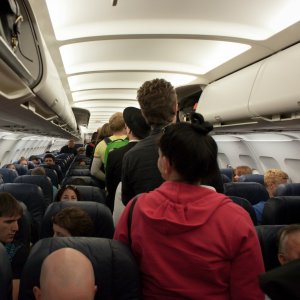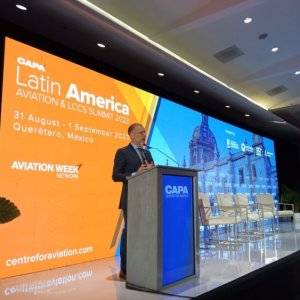Harmonizing Latin America’s Growing Tourism Industry

STORY INLINE POST
Q: How does the harmonization of aeronautical regulations in the region help improve aviation safety?
A: Safety is the core of aviation. ALTA has been working with the International Civil Aviation Organization’s (ICAO) North American, Central American and Caribbean (NACC) office, which includes Mexico, and the South America (SAM) office to harmonize regulations in the region. Part of our job is to promote the benefits of collaboration among our countries. In South America, for example, 11 States have adhered to a multinational technical cooperation agreement for the harmonized acceptance of aircraft maintenance organizations and aircraft components between the Civil Aviation Authorities of the States participating in the SRVSOP. As a result, five organizations have already been certified and another three are in the certification process. This measure guarantees safety in the countries that have signed the agreement and the opportunity to greatly reducing costs.
At ALTA we are also working with governments to harmonize COVID-19 sanitary requirements to ensure the safety of passengers, give users confidence in air travel and limit cost increases so people can continue flying.
Q: How can improved safety standards in aviation benefit commercial airlines in the region?
A: Smaller airlines operate under the International Air Transport Association’s (IATA) Standard Safety Assessment (ISSA) certification, while larger airlines operate under the IATA Operational Safety Audit (IOSA). In Central America, a large number of Caribbean airlines need ISSA. Our safety department helps airlines access the necessary training to gain this certification.
Typically, large airlines enter into agreements with others that have the same levels of certification and safety. The ISSA airlines can function as “feeders” for big airlines. Through ISSA and IOSA, safety in the region is greatly increasing. It is helping Latin America become one of the best regions to fly in the world.
Q: What benefits come from providing visibility over aviation maintenance and technical purchases in Latin America and the Caribbean?
A: Visibility is everything. The region has significant potential for business, tourism and travel because it has what the modern traveler is looking for: contact with nature and a culture to discover. The ALTA CCMA & MRO conference is the largest and oldest event dedicated to technical purchasing and Maintenance, Repair and Overhaul (MRO) in the region, bringing together airlines, MROs and other suppliers to show that Latin America and the Caribbean have great potential and strength.
In Latin America, aviation is extremely important because the region lacks trains or roads to travel between countries and to islands. In order to make aviation even more accessible for more people, the industry is working to generate efficiencies and optimize the use of resources and operations. Technologies play a key role here and this type of event helps to share solutions, best practices and connect the interested parts to make these advancements possible.
Q: What are ALTA’s recovery expectations for Latin America and the Caribbean’s aviation industry?
A: We had a clearer forecast in February but the situation in the EU has muddied the waters. Latin America has great potential and the numbers prove it. In December 2021, the region was returning to its 2019 levels and was expected to recover, with Mexico, Colombia and Brazil leading this effort. But the Russia-Ukraine conflict, challenges in the supply chain, currencies devaluation and fuel price growth are just some of the challenges this industry and others are facing. Fuel represents about 30 percent of an airline’s operation costs, the impact is significant and requires airlines to adjust to this reality to minimize the impact on passengers. Similar to the COVID-19 crisis, the industry’s resilience will determine the outcome.
At ALTA we see an opportunity for companies to come to Latin America to produce SAF. We have been working with the governments in the region to implement efficient and effective regional policies for the development and production of SAF, providing legal certainty to attract investments, developing the infrastructure needed to generate competitiveness, supporting the development of the supply chain, to name a few of the key tasks to achieve a large-scale supply of sustainable aviation fuels at competitive costs.
ALTA has been working with the governments such as Colombia, Costa Rica and the Dominican Republic to allow the transition from jet A1 to jet A, an essential change for the competitiveness of the industry in the region since few countries use jet A1, a more expensive fuel required to operate under certain climatic conditions. This transition translates into efficiencies for the industry (therefore benefits for the users) and much more competitiveness for our countries.
Q: What opportunities do you see to increase tourism in the region?
A: We have seen the so-called “tourism of revenge,” which reflects the necessity of getting out of home after months of lockdowns. There is also a growing interest in moving from cities to nature, and Latin America and the Caribbean is a source of magical places full of nature and culture. The pandemic has demonstrated that we, as social beings, need to connect and learn about new cultures, visit new places and meet with our loved ones. So, I strongly believe that tourism will recover, of course we need to facilitate the conditions for that by eliminating inefficient travel restrictions that reduce passengers’ confidence in traveling and reduce costs for the industry to operate.
At ALTA we have an agenda with governments for code-sharing between domestic and international airlines. The objective is to use Brazil’s method, in which tourists flying internationally do not have to pay for VAT through code-sharing arrangements with domestic airlines in other regions. This model leads to more tourism, development and jobs. The travel and tourism industry is a powerful engine for socioeconomic development, generating millions of jobs (over 17 million in the region before the pandemic).
Q: What are ALTA’s plans for 2022?
A: Accompanying our members to take key steps to reach the goal of zero net emissions by 2050 is a priority, as is working with governments in the implementation of adequate public policies to achieve these goals, without this generating additional costs for the industry and users.
Central America has significant potential, especially if we facilitate connectivity in the region. ALTA will continue working to strengthen connectivity between the region and the entire world and to show governments that implementing efficient regulations that reduce costs will translate into development, jobs and revenues.
Education is everything, so at ALTA we have special programs with governments and the private sector to provide education for anyone in the region who wants to take an aviation course. We have to be prepared for the industry’s growth. Finally, ALTA has many meetings and events to bring people together. This year we will host four in-person events in Cartagena, Sao Paulo, Rio de Janeiro and Buenos Aires.
The Latin American and Caribbean Air Transport Association (ALTA) coordinates collaborative efforts across the aviation industry to facilitate the development of a safer, more efficient and environmentally responsible air transport in Latin America and the Caribbean.








 By Sofía Hanna | Journalist and Industry Analyst -
Tue, 03/29/2022 - 09:47
By Sofía Hanna | Journalist and Industry Analyst -
Tue, 03/29/2022 - 09:47













